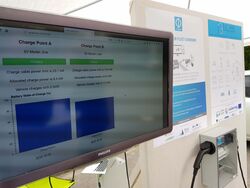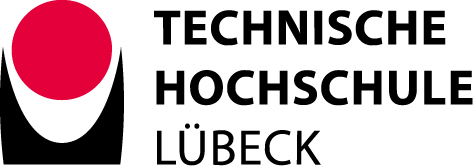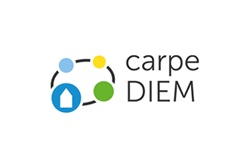Case studies, data collection and simulations

A first case study site was found in a village located in the North-West of the German federal state of Schleswig-Holstein, It has wind energy a biogas plant (CHP) and solar panels on private houses. This village seeks on reaching autarky from external power supply and made it therefore suitable for our studies.The partners installed hardware that allowed data collection of ten different places within the village in intervals of a second. This data served the analysis and the simulation.
Further demonstration sites were found at the GreenTEC Campus where we installed an intelligent charge station that applies the DIEM technology to control charging of e-vehicles. In addition we analysed e-vehicle utilistaion for a company fleet for Kreis-Ostholstein.
On the Danish site we analysed the consumption of Ærø a small island in the southern Danish Sea. Ærø,produces more power than the island itself consumes. Paradoxically, Ærø is nevertheless forced to export and import power because the consumption pattern of the inhabitants does not match the power production of the six large wind turbines on the island.
As a final demonstration site in Denmark the SDU Sønderborg has established intelligent charge stations for e-vehicles.
Data collection
We received data via differnt channels. In Bordelum and at GreenTEC Campus we collected data from different Smart Meters for heat and electricity of private households, photovoltaic systems, farms and charging stations for electric vehicles. This data was networked over the data collection system cbb Libra-Smart Metering*. We developed a secure connection for data collection and transfer to the partner cbb and their data collection server. The collected data could be visualized and analyzed in the cbb online management portal: enwiso.
In other locations we used provided data like the one from Ærø complemented with available official statistical data where necessary. The original reports (under the link Publikations) indicate all sources.
OpenVPN Gateway for secure Smart Meter connection
 The image on the left displays our concept for the data collection from all meters. An ARM based embedded Single Board Computer served as hardware platform. The operating system was a Debian Linux system, as this was already proven as a compatible target platform for the cbb middelware opcsa. We installed an OpenVPN client for secure communication to the cbb data collection server and configured it. We configured the gatewas individually and put them into operation onsite.
The image on the left displays our concept for the data collection from all meters. An ARM based embedded Single Board Computer served as hardware platform. The operating system was a Debian Linux system, as this was already proven as a compatible target platform for the cbb middelware opcsa. We installed an OpenVPN client for secure communication to the cbb data collection server and configured it. We configured the gatewas individually and put them into operation onsite.
Visualising and analysing the data
Simulations
Reaching autarky via integration and intelligent control of energy storage
Rural communities possess a high potential for using renewable energies. Storage technologies can increase their degree of autarky. Therefore we developed a simulation tool to investigate the energy autarky in micro-grids. In this simulation model the electricity or heat sector or both can be considered. Data was collected and investigations were carried out for the township Bordelum (North Frisia, Germany) and the island Ærø in Denmark. Some data had to be complemented by official statistical sources. The case studies indicate that the autarky can be increased.
Electrical autarky of Bordelum (compare poster by Malte Myrau)
In some places people would like to become independent of their local power supply. We simulated the degree to which this autarky over time can be reached and under which circumstances. We took into account the electrical consumers, photovoltaic plants, a wind turbine and a biogas plant (CHP) in Bordelum. We simulated the consumers by using the load profile generator from the TU Chemnitz. In seven different scenarios we simulated the efffect of individual storages or a central Redox-Flow battery storage for the village and varied their sizes.
Additionally, the workload effect on the grid was monitored. An increasing maximum peak load could lead to expensive grid-upgrades.
| I | existing PV Plants on buildings get refitted with a battery storage: 8-10 kWh |
|---|---|
| II-a | all residual buildings should have 9,7 kWp PV-plant and 4,9 kWh battery |
| II-b | same settings as II-a but 9,7 kWh battery |
| III | Redox flow battery for local distribution system 2200kWh |
| IV | Wind power plant for local distribution grid |
| V | Small redox flow battery (560 kWh) combined with wind power |
| VI | Using existing CHP (875 kWel) for electrical coverage |
The following diagramm reveals that full autarky is only possible with the CHP plant as electricity provider. However it is possible to come close to autarky in other cases. If we take into account that the peak load for the external grid should be minimized, then case III is the only case that lowers the maximum peak load (green colour) and is thus beneficial for the system.

Electrical and heat autarky of Bordelum
In a second step we considered both, the electrical and thermal energy sector. The heat supply was modeled with heat pumps, heating rods and with heat storage systems and compared to the current state.
It turns out that a very high degree of autarky of 99 % without CO2 emissions in the electrical and thermal energy sector is possible. This requires sector coupling of heat and electricity, heat storage and electricity from renewable energy systems. As in the previous case a central storage for heat in the village is preferable and each house should have a heat pump. This in addition to the central electrical storage as in case III.
All simulations consider only the village Bordelum and not the effect on an external grid. This was analysed by EUF and is explained under the subject Local optimized energy management.
Economic aspects were not considered in this study.
Ærø’s autarky degree, simulation
 In this study we analysed the current state of the electrical and thermal energy supply on Ærø in all places with a district heating system. Then the influence of the electric ferry and a Redox Flow battery on the autarky was investigated. As for Bordelum it is more advantageous for the autarky degree to establish a central storage like a Redox Flow battery. The size of the battery should be carefully choosen as the autarky increases from 0 kWh up to 500 kWh by approx. 0.48% but from 4500 kWh to 5000 kWh only by 0.24%.
In this study we analysed the current state of the electrical and thermal energy supply on Ærø in all places with a district heating system. Then the influence of the electric ferry and a Redox Flow battery on the autarky was investigated. As for Bordelum it is more advantageous for the autarky degree to establish a central storage like a Redox Flow battery. The size of the battery should be carefully choosen as the autarky increases from 0 kWh up to 500 kWh by approx. 0.48% but from 4500 kWh to 5000 kWh only by 0.24%.
| Parameter | Including ferry | Without ferry | Difference |
|---|---|---|---|
| Autarky (%) | 66,21 | 67,15 | -0,94 |
| Self consumption part (%) | 52,96 | 50,98 | 1,98 |

Conclusions
For the case of Bordelum we conclude that a Redox Flow battery within the distribution grid leads to a high autarky degree (83%) and also lowers the maximum peak load (-16%).
In all cases it is advisable to use a central storage compared to single prosumer storages.
In the discussed cases the self consumption of the produced energy was not very high due to the fact that both Bordelum and Ærø produce more energy than they actually need.



